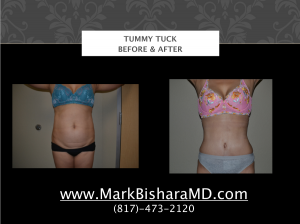 Lipo, Liposuction, Lipoplasty
Lipo, Liposuction, Lipoplasty
Click here to view the Tummy Liposuction procedure animated »
Click here to view the Arm Liposuction procedure animated »
Click here to view the Buttocks Liposuction procedure animated »
Click here to view the Thighs Liposuction procedure animated
Liposuction/Lipoplasty or as many refer to as Lipo is a surgical procedure used to slim and reshape certain areas of the body. It is used to remove excessive fat deposits that just don’t respond with dieting or exercise. Liposuction can be done on areas from thighs to hips and buttocks as well as in the abdomen, waist, back and upper arms.
Dr. Giorgio Fischer invented the Liposuction procedure in 1974. Soon after, four years later Dr. Illouz, a french plastic surgeon, made the first cosmetic use of the procedure. The Liposuction invention has now been one of the most popular procedures performed by Dr. Mark A. Bishara here at The Paragon Plastic Surgery and Med Spa.
Who is a Candidate?
Although many people think that liposuction is a great way to get rid of unwanted fat or just a way of not having to deal with dieting or exercise that is not the case. To be a candidate one must have a stable body weight and be in good general health, exercising and have an on going diet. Liposuction is not a weight loss method nor a treatment for obesity. The purpose of the procedure is to help the patient change and enhance the contour of his/her body.
About the Procedure….
When having any procedure there are many things that should be done. The first step is coming in and consulting with Dr. Mark A. Bishara here at The Paragon Plastic Surgery and Med Spa. Coming in will help the surgeon understand what areas to aim for and explain all steps on what takes place on the day of surgery. Once agreed with Dr. Mark A. Bishara on the areas that will be treated the surgery appointment will be set.
On the day of your liposuction procedure, consent forms will be signed. Dr. Mark A. Bishara will mark the areas where the fat will be removed from. Photographs will be taken for use of before and after. The nurse will then start an IV fluid line. Liposuction is usually carried out under general anesthesia, fluids containing medicines that limit blood loss and reduce discomfort are injected into the areas that are to be treated. Throughout the liposuction the nurses at The Paragon Plastic Surgery and Med Spa will monitor the patients blood pressure, heart rate, and blood oxygen level. During liposuction Dr. Mark A. Bishara removes the fat using a hollow instrument/ cannula that is attached to a high pressure vacuum. The cannula is then inserted under the skin, and the fat suction begins.
On the road Recovery
As with most surgeries, after liposuction patients typically experience bleeding, swelling and bruising. Bruising usually goes away within 3 to 6 weeks. 80% swelling is gone in 2 to 6 weeks and the remainder should be gone in 3 to 12 months. Fever may occur the first few days following surgery as it is is a normal process of the inflammatory response. As far as diet, you may resume your usual diet after surgery. Avoid caffeinated and alcoholic drinks 48 hours after surgery. Make sure to keep hydrated for the first few days. Drainage may occur, within the first 24-72 hours after surgery a large volume of blood-tinged fluid will drain from the small drain ports. Going home the day of surgery you will wear and elastic garment and it should be removed the morning after surgery to shower then put back on and off after showers until your follow up procedure. The Paragon Plastic Surgery Med Spa will provide you with all post op care instructions after your liposuction procedure.
LEARN MORE ABOUT OUR LIPOSUCTION SERVICES, PLEASE CONTACT US (817) 473-2120 OR EMAIL [email protected]
ARLINGTON TEXAS














